There’s nothing quite like eating a real delicacy, is there?
Lobster, caviar, foie gras—you name it. If it’s considered a delicacy, most people want to dive right in and enjoy it the first chance they get. I’m the same way!
One of the most popular expensive cooking ingredients is the truffle. This food has been considered a delicacy since the time of the ancient Egyptians, and it’s not losing steam anytime soon. Since truffles have become more and more common in recent years, people are finally getting a chance to take a bite of this incredible, flavorful fungus.
But there’s a lot to learn about truffles! You can’t really walk into the nearest grocery store and just pick up a package of truffles like you would with mushrooms. And that’s where this article comes in. By the time you’ve finished reading through this FAQ, you’ll have all the information you need to get started enjoying truffles right away.
Check out answers to some of the most commonly-asked truffle questions, as well as those you might not have thought of just yet. You’ll discover tons of tips, tricks, and information that can help guide you toward the perfect truffle experience.
Let’s get started!
Q: What is a Truffle?
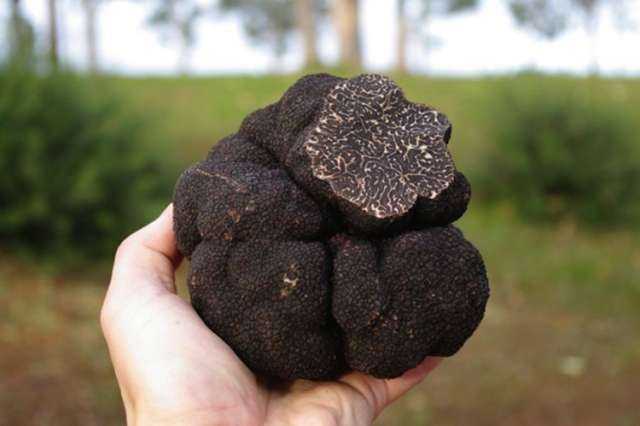
Have you ever asked yourself, “what is a truffle found in the ground?” In this case, we’re not talking about chocolates! A truffle is a type of fungus that grows on the roots of certain types of trees. They form a symbiotic relationship with the trees, as they provide nutrients to the roots while also taking away nutrients of their own. Truffles grow just underneath the top layer of soil, near the place where the tree’s roots meet its trunk. They’re not easy to find, but they’re well worth the effort!
But there’s more to learn about what is a wild truffle. These unique and rare delicacies only form at certain times of the year, which makes them very scarce and very popular. They’re featured in a variety of high-quality dishes, and the more valuable the truffle, the more expensive a dish including that truffle will be. For centuries, truffles have been considered as a high-class food item, reserved only for the nobility and for those who could afford to eat them. That’s still true today, although they’re becoming slowly more and more accessible to people around the world.
There’s a lot to learn about truffles, but at their core, it’s important to remember that they’re a prized food ingredient that is often paired with Italian and French cuisine.
Q: So, is a Truffle a Mushroom?
You’ve probably heard of truffles referred to as mushrooms, but is a truffle a mushroom at all? Technically, the answer is no! Truffles aren’t a part of the same family as most other types of mushrooms. While they might often be considered a type of mushroom because of their similarities, when asking yourself “what is a natural truffle?” be sure to remember that it isn’t technically a mushroom at all.
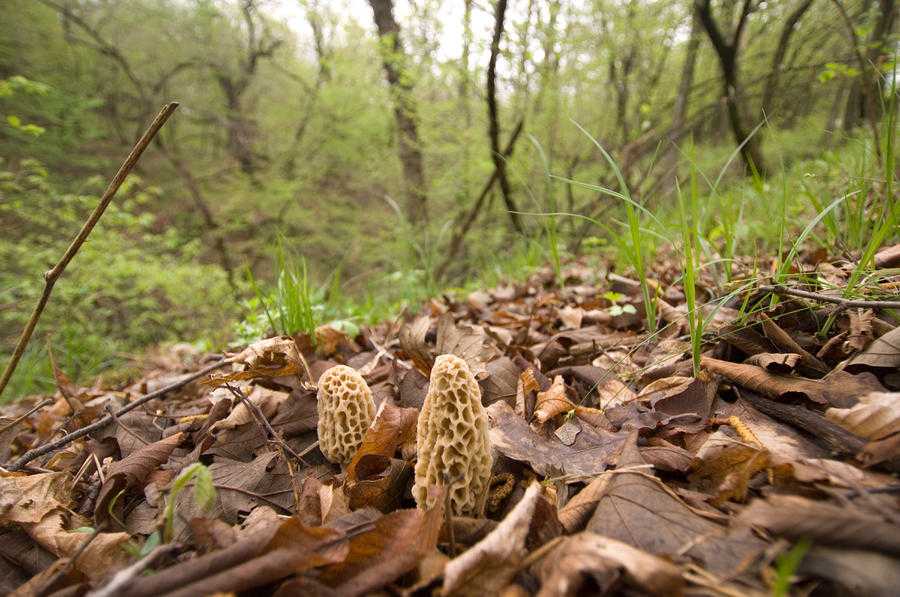
In order to understand more about whether or not a truffle is a mushroom, think back to high school biology classes. Remember the concepts of kingdom, phylum, and genus in nature? Truffles are a part of the Tuber genus, while most edible mushrooms are part of the Agaricus genus. The two don’t share the same phylum either. Truffles have to go all the way back to their kingdom before they’re remotely related to mushrooms.
Is a truffle a vegetable, then? No, it’s not! Truffles and mushrooms might not share much of the same family, but the two are both a type of fungus, and this is where they have some similarities. To put it very plainly, a truffle isn’t a mushroom, and a mushroom isn’t a truffle, but they’re both representatives of the fungus kingdom, and so they both serve the same purpose in cooking.
Q: What Kinds of Truffles Are There?
Now that you’ve answered the question “what is a truffle mushroom?” you can start to delve deeper into the many different kinds of truffles available on the market worldwide. While other articles here on this site will give you more information about each one, and about how to cook with them, I’ll give you a brief summary of the truffle varieties here so you can understand which is which.
- Winter White Truffle – This is the most valuable type of truffle in the world. Winter white truffles have a garlic flavor and a very strong smell of ammonia that distinguishes them considerably from black truffles. They have an incredible taste that can, unfortunately, fade very quickly after harvesting, so they’re best when eaten as fresh as possible. Winter white truffles found in Alba and Piedmont in the northern part of Italy are the most expensive in the world.
- Winter Black Truffle – These truffles are almost as valuable as winter white truffles, but not quite. They have a deep, earthy, chocolaty flavor and aroma, and they also tend to be likened to the taste of red wine. These truffles are harvested in the coldest part of winter, and must be carefully removed at the peak of their growing season without waiting too long or harvesting too soon. Winter black truffles found in Perigord in France are the most highly sought after.
- Summer White Truffle – This type of truffle is found in many of the same places as the winter white truffle, but it isn’t nearly as valuable. This is because truffles harvested in the summer don’t have the same level of fragrance and flavor that their winter cousins do. They tend to be a little bit sweeter, and they aren’t generally as prized because of this. Still, they have a big role in the world of more affordable truffles, especially when frozen.
- Summer Black Truffle – Like the summer white truffle, the summer black truffle is harvested during the warmer part of the year and doesn’t have the strong flavor its winter variety has. Its taste is subtle, and so it isn’t usually eaten raw or showcased as a main ingredient in food. Nevertheless, it’s often used in cooking as a supporting ingredient, and it may also show up in products like truffle oil or truffle butter.
- Oregon Black Truffle – This type of truffle is grown in the Pacific Northwestern United States. It’s very similar to the same quality and flavor as a summer black truffle, but because it doesn’t come from a European country, it doesn’t fetch as high of a price on truffle markets. Still, it has a lot of use as a cooking ingredient, and it turns up in a lot of truffle products as well.
- Chinese Black Truffle – Sometimes mislabeled as winter black truffles, these truffles are different when it comes to both flavor and texture, and they aren’t very valuable overall. They grow in certain provinces in China, as well as in Tibet and Nepal, and they tend to form on conifer trees as opposed to nut trees like most other types of truffles. They are sometimes sold as different types of black truffles on purpose, which gives them a bit of a bad reputation.
Q: What is the Difference Between French and Italian Truffles?
You might have heard different types of truffles referred to as French or Italian truffles. This is not quite proper terminology, but if you see it turn up in a recipe or even in a truffle shop, it’s a good idea to know which type is which!
- What is a French truffle? This term refers to black truffles found in France, and particularly in the Perigord region. They’re the most valuable type of black truffles in the world, and Perigord truffles specifically are harvested during the winter months. Any black truffle that comes from a part of France, however, can be labeled as a French truffle.
- What is an Italian truffle? These truffles are usually a little bit more specific. The term refers to Alba and Piedmont white truffles that are found in the northern part of Italy. These are the most prized and expensive truffles in the world, so having an Italian truffle on your hands is really a treat!
Remember, too, that these aren’t the only types of truffles. White truffles can be found in other places besides Italy, particularly throughout Europe, and black truffles can be found in other European countries as well as in the United States and China. For the most part, designating a truffle as French or Italian really only has to do with its value, since truffles from these countries usually tend to be worth a little more.
Q: Where Can Truffles Be Found?
We’ve already talked a little bit about the countries in which truffles usually grow. As a quick recap, black truffles can be found through Europe, as well as in China and the United States, while white truffles tend to grow almost exclusively in Italy, with a few others scattered throughout other European countries. But what makes these parts of the world so perfect for truffle growth?
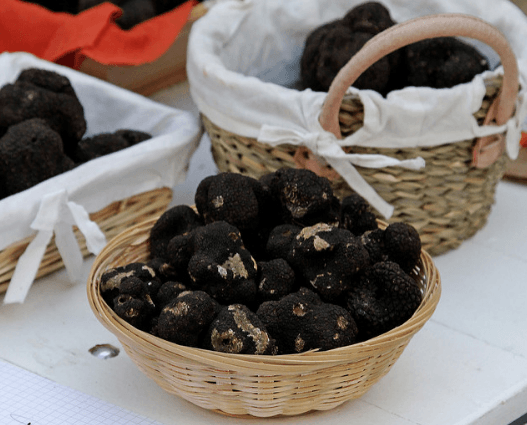
To begin with, truffles need to experience all four seasons in order to really grow well. This is why they can’t grow somewhere very cold all year long, or somewhere very hot and muggy! They need a hot, dry summer and a cold winter, interrupted by periods of rain, to flourish. The more rain a truffle gets, the better off it will be since it’s a type of fungus that’s drawn to moisture.
Truffles also need a very specific pH balance in the soil in order to grow. They will form in soils with a pH of anywhere between 7.5 and 8.3, but they’re most likely to grow well in soil with a specific pH of 7.9.
Because of all these requirements, it’s hard to come across a truffle in the wild! When they grow, however, they tend to return year after year to the same tree, provided the entire fungus isn’t removed for harvesting.
Q: Do Truffles Only Grow in the Wild?
It takes a lot of specific conditions for truffles to thrive, but can they grow anywhere other than in the wild? For a long time, people believed it was impossible to convince a tree to grow truffles. However, that’s proven to be a little bit false in recent years!
It’s much more likely for truffles to be found in the wild than it is for them to grow purposefully on someone’s property. However, thanks to some modern day inventions, an inoculation has been developed which can be injected into certain types of trees in order to encourage the growth of truffles. It works much better for black truffles than it does for white ones, but white truffle inoculations are still being tested and improved upon every day. Parts of the United States have seen a lot of success working with trees injected with black truffles.
Truffle farms, or truffieres, are becoming more and more prevalent around the world as farmers work with black truffle inoculations to grow these prized fungi in places where they otherwise would never have formed before. Because of these scientific advances, it’s possible that the truffle crop will continue to thrive around the world, and truffles may one day be a lot more common!
Q: How are Truffles Cultivated?
If you’re interested in getting involved in the world of truffles, you may be wondering, “Is it possible to grow truffles on your own?” As mentioned before, it takes a lot of specific cultivation and conditions to grow truffles, and it may be a lot more work than you’re willing to put in. However, if you have the time, money, and energy to put into truffle cultivation, it’s possible that you can see a good return in only a few years’ time.
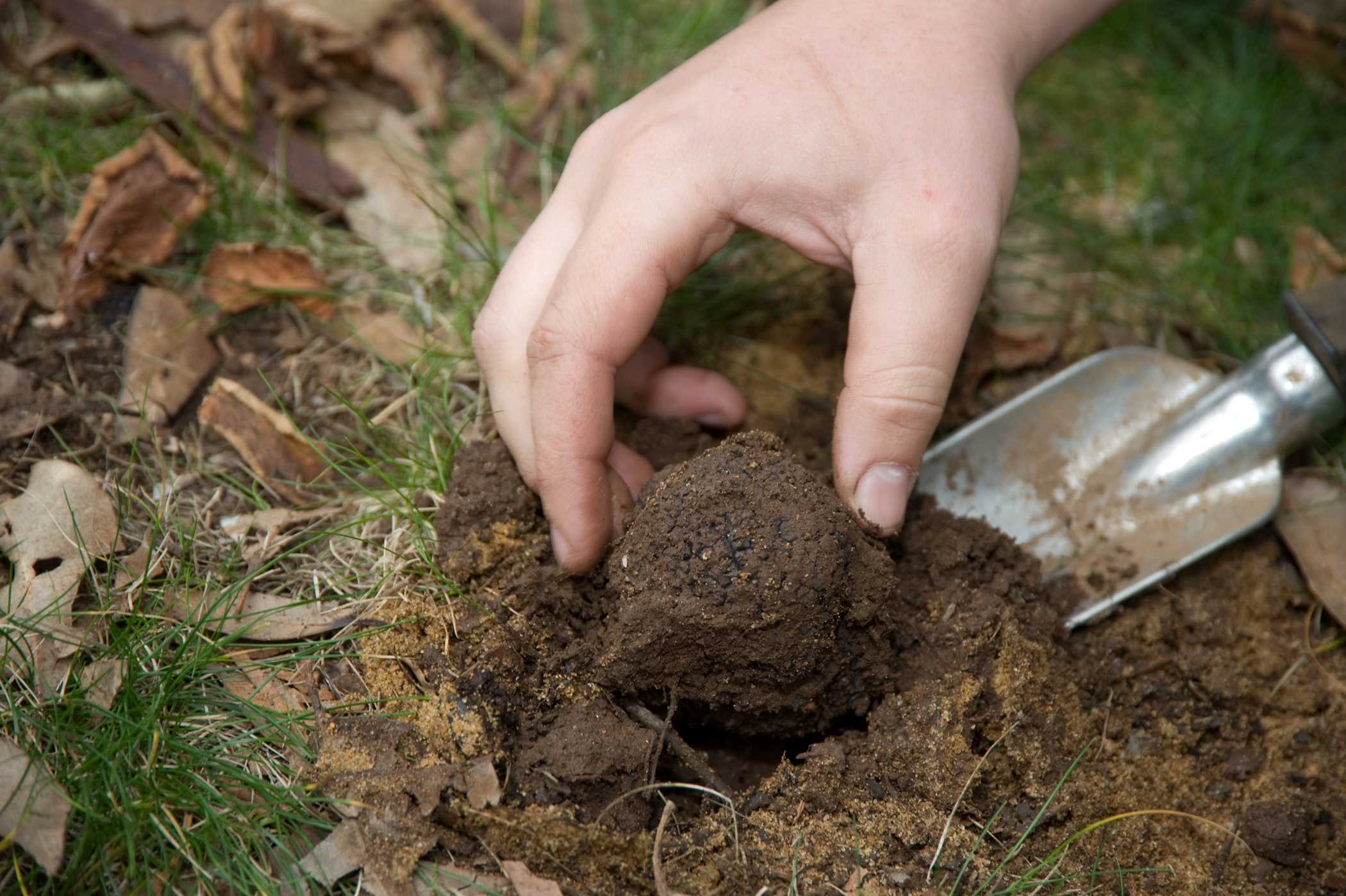
Cultivating truffles first requires a pretty good amount of land in a place where the climate is right. The Pacific Northwestern part of the United States is a great place to grow truffles, but truffle farms have been successful in both Texas and North Carolina as well. The soil will need to be treated if it doesn’t have the right pH value, and trees will need plenty of irrigation to stay moist enough to encourage fungal growth. Trees will need to be inoculated and monitored closely for signs of truffles, and it may take upwards of 5 years to see any truffle formation.
As you can see, a lot is needed in order to make truffles grow purposefully! Many truffle hunters continue to rely on wild-growing truffles instead of going to the trouble to try to grow them. However, wild truffle populations are dwindling every year, and so it’s up to those who are willing to cultivate truffles to keep their numbers as high as possible.
Q: What is a Truffle Tree?
If you’re researching truffles, you might have heard the term “truffle tree” before. But just what is a truffle tree? Simply put, it’s a tree on which truffles are currently growing or have grown before. This isn’t a tree that you might monitor for the possibility of truffle growth, but rather one that has shown before that it’s capable of producing truffles.
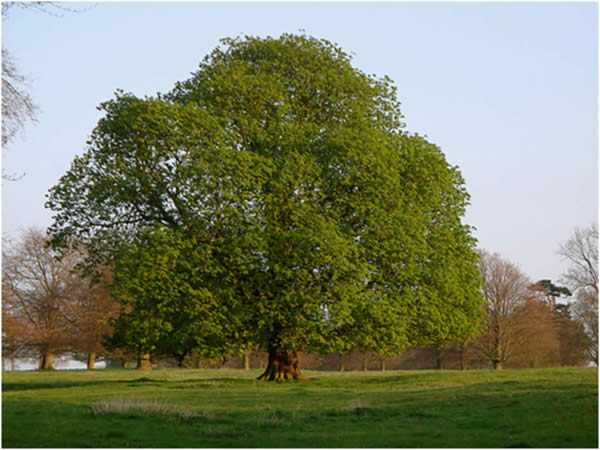
Most types of trees are able to grow truffles, although not all. Nut trees are by far the most common for truffle growth. Beech, hazelnut, and pecan trees have all historically been very good at growing truffles, as have oak trees, birches, poplars, and pines. Truffles that grow on nut trees are likely to develop some of the flavors of the tree itself and taste nuttier than those that form on other types of trees.
The term “truffle tree” might also refer to trees that come from certified truffle tree suppliers. These trees arrive having already been inoculated with the truffle fungus, so you can cut out that stuff if you’re trying to grow truffles on your own property. Although these trees are easy to find from quality suppliers, it’s important to remember that they may or may not always work. Just because a truffle tree has been injected doesn’t mean it will necessarily grow a truffle.
Q: How are Truffles Harvested?
When you find a tree growing a truffle, you’re probably excited and ready to harvest it right away. But don’t be too quick! If you harvest the truffle at the wrong time, or in the wrong way, it can mean a lesser-quality product and the potential for damage to the tree itself. Keep these tips in mind for better truffle harvesting.
- Try not to rake the soil. If you absolutely must use a rake to get to truffles, be very gentle and remember to replace the soil and anything else you had to move out of the way to get to them. This will encourage further truffle growth in the future, and won’t hurt the tree’s roots.
- Don’t remove the entire truffle. Leave part of the fungus, and only remove the “fruit” of the truffle. This way, there will be more of a chance for the truffle to grow again in the same place in the future.If you aren’t sure whether or not a truffle tree is producing truffles, look for brule around the base. This will look like a burned area with no vegetation, and it’s a result of the toxic fumes put off by truffles while they’re growing.
- Some people use truffle hogs to look for truffles. What is a truffle hog? It’s any type of pig that is used to root for the truffles under the soil. Females can smell the truffles up to three feet beneath the earth, making them great at finding them. However, they also tend to eat the truffles when they get to them, so they aren’t always a great solution.
- Dogs are a much more effective way to find truffles. They can be trained to locate the scent, and they aren’t inclined to eat the truffles when they get there. Modern truffle hunters harvest them much more commonly with the help of dogs than with pigs.
Q: What are Truffle Oil, Truffle Oil, and Truffle Sauce?
You’ve probably heard of products made from truffles, including truffle oil, truffle butter, and truffle sauce. If so, you’ve probably also wondered a lot about them! Do they contain real truffles? Are they a good value for their price? Do they offer a good substitute when you can’t afford using real, fresh truffles? There’s a lot to learn about these products, so check out this list to help you understand them a little bit better.
- What is truffle oil? This product has become very popular in recent years, and you’ve probably seen it on the shelves of stores or on menu items across the country. It sounds a little too good to be true, doesn’t it? Getting the flavor of a truffle for a very low cost is a lofty promise, and unfortunately, most truffle oils can’t deliver on it. If a truffle oil is very cheap, that means it’s not made with real truffles at all. Even if it claims to be, an affordable truffle oil probably is made from chemicals that combine to taste like truffles instead. It can offer a nice flavor for your cooking, but if you’re looking for the real thing, be sure to pay for a better quality product that is made with real truffles.
- What is truffle butter? Truffle butter is usually made from fresh creamery butter, and in many cases, it’s either organic, locally-sourced, or both. It’s whipped to a beautiful, creamy consistency, and then blended with chopped pieces of real black truffles. These pieces usually come from truffles that aren’t good for selling on their own as fresh specimens, and they are often summer or Oregon black truffles. However, if you’re looking for a unique way to add truffle flavor to your cooking, this is a great solution. Be sure to get a butter with real pieces of truffle.
- What is black truffle sauce? This is a jarred product that is made from sliced, chopped, or shaved pieces of real truffles. It’s usually made from black truffles, and most of the time, it comes from the summer and Oregon varieties. Black truffle sauce is often thin and sort of like a pesto, and it can be used on its own as a sauce or blended with a standard cream sauce to make an even more incredible taste experience.
Q: How Much Are Truffles Worth?
Have you ever asked yourself, “What is a truffle worth?” If so, you might be in for a surprise when you find out the answer! Although there are a lot of notable truffles that have sold for incredible amounts of money at auction, most of the time, there are pretty standard prices you can expect to pay for fresh truffle specimens.
- Summer black truffles (also called Burgundy truffles on the market) sell for around $160 per pound. If they come from the Perigord region, their price may increase, but not by a lot for the summer specimens.
- Pecan truffles and Oregon black truffles run for around $120 per pound. These types are only sold in the United States and are not exported to other countries or sold on any other truffle markets.
- Chinese black truffles, which are some of the least valuable on the market, go for only about $50 per pound. Very nice specimens may sell for higher than this, but again, not by much.
- Winter black truffles sell for around $700 per pound, and may go for even more if they come from the Perigord region of France. They are very highly sought after and have sold for a lot of money at auctions, especially for very nice specimens.
- Winter white truffles are the ones that really make the news when it comes to selling price. If you’ve ever wondered “what is the most expensive truffle in the world?” this is the answer! These truffles can sell for upwards of $2000 per pound if they come from the Piedmont or Alba regions of Italy. The most impressive specimens have recently sold for one hundred thousand dollars per pound at truffle auctions. It takes a really special truffle to reach prices that high, but every now and then, one comes along that completely blows away the chefs and aficionados that are willing to pay such high prices for an incredible example of a truffle.
- Truffle butter, truffle oil, and truffle sauce are very affordable products. However, if you find any of these for a very low price, chances are they don’t contain any real truffle. Be wary of buying these, and don’t try to cut corners with the cost too much.
- Frozen truffles also offer a great way for you to get the taste of truffle in your cooking without having to pay the lofty prices most fresh truffles fetch at market. Frozen truffles can be black or white, and can be winter or summer. However, winter black truffles tend to be the most common varieties sold frozen. Note: Frozen truffles should never be thawed before using.
Q: Why Are Truffles So Expensive?
Obviously, truffles cost a lot of money to work with! These are not cheap ingredients, and if you’re looking to add truffle to your cooking, you’re probably going to end up paying quite a lot of money to do so. However, many chefs and food fans alike believe it’s well worth the cost to purchase them as fresh and authentic as possible.
But why is truffle so expensive to cook with? As you can see, truffles are a lot of trouble to find! If you’re looking for them in the wild, it can be next to impossible to actually find them without putting forth a lot of effort. You’ll have to use dogs or pigs, and you’ll have to be very careful and spend a lot of time out truffle hunting.
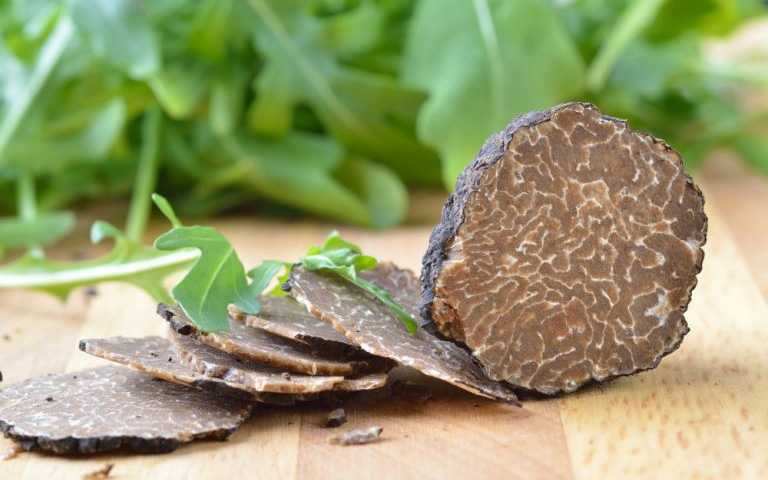
On the other hand, if you try to grow them yourself, it can cost much more to actually see truffle growth. Trees, land, water, and farm equipment run thousands of dollars, and if the weather happens to take a turn for the worse when it shouldn’t, the entire crop can fail. Truffles are rare in the wild and even rarer in cultivation, so it makes sense that they’d cost a lot of money to purchase!
Of course, a part of the price comes from the prestige that surrounds eating a truffle. It’s considered a delicacy, and at one time, it was reserved only for nobility and very prestigious people. Part of that mindset still carries over into today, and people are willing to pay quite a lot of money for the honor of enjoying the incredible flavor of a truffle.
Conclusion
As you can see, there’s a lot to learn about truffles! This FAQ has been designed to answer some of the most common questions you might have if you’re just getting into the world of truffle hunting, truffle cultivation, or truffle eating. However, there’s always a lot more to explore when it comes to these exciting and highly prized fungi.
If you’re looking to learn more about the exciting world of truffles, you’re in the right place! This website is packed full of articles that are just waiting for you to check out. The more you read, the more you’ll be able to understand about just what makes truffles so special, and how you can bring them into your life and recipes.
We’ve got articles throughout the site to teach you how to cook with truffles—even if you never have before!—and offer you tons of recipes to help you get started. You can also check out tips and tricks for storing your truffles, and more in-depth information for growing your own if you’re inclined to try.
Truffles can be a difficult hobby to get into, and they can cost a lot as well! But if you’re willing to put in a little time and effort for research, you can soon learn everything there is to know about truffles and so much more. In no time, you’ll be a wealth of knowledge about these delicious treats from the earth!
